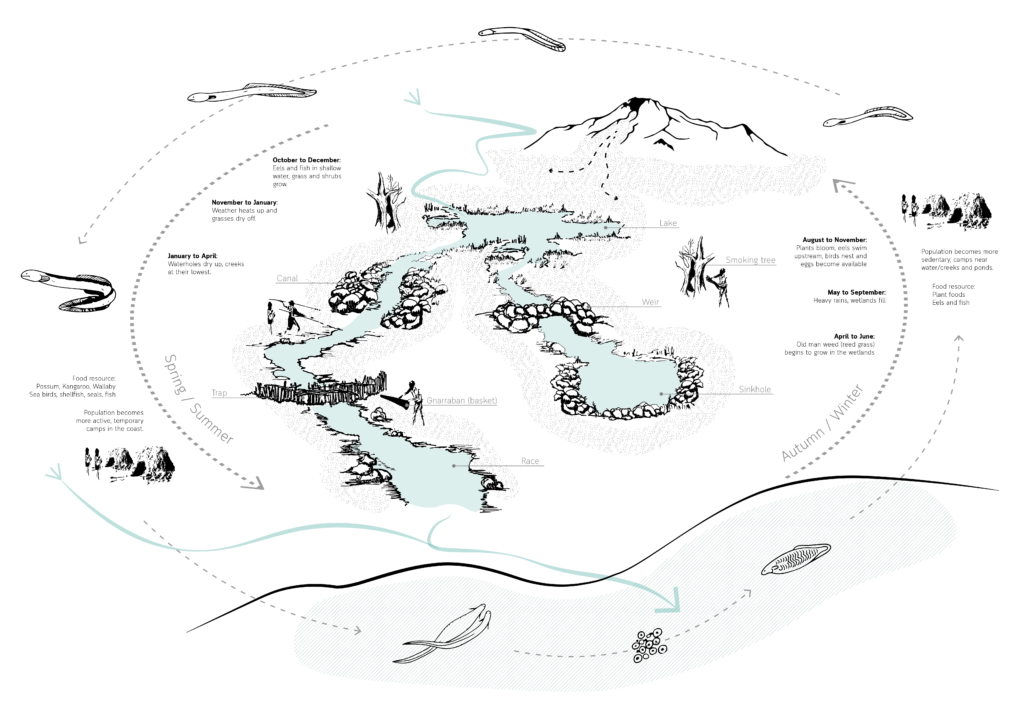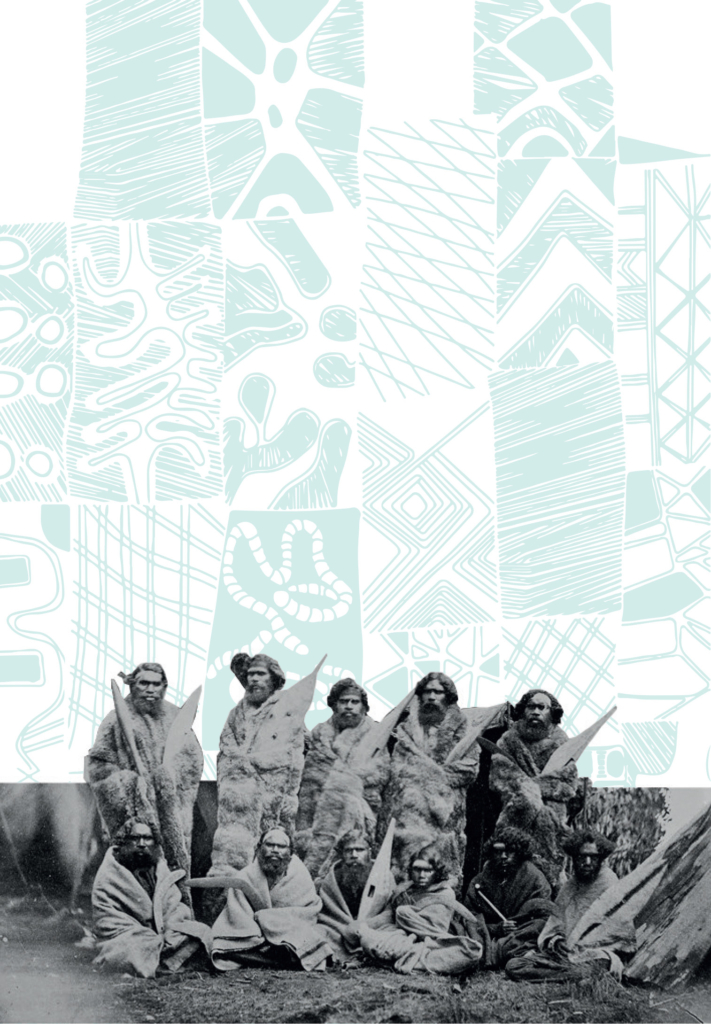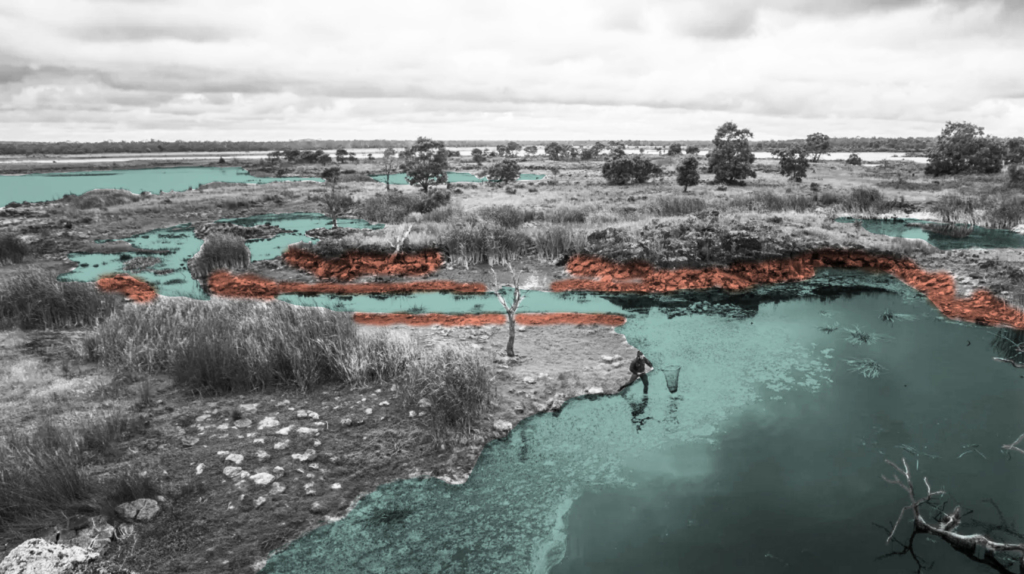
Aboriginal eel aquaculture system in
María José Zúñiga
Gunditjmara Country, South West Victoria, Australia.
2020
The Budj Bim Cultural Landscape is located in the Country of the Gunditjmara aboriginal people in Victoria, Australia. Budj Bim (known today as Mount Eccles) is the volcano that thousands of years ago caused an extensive lava flow that transformed the landscape and provided the base for the aquaculture system developed by the Gunditjmara people. The extensive network of canals, traps and weirs was once a highly productive aquaculture system constructed to trap, store and harvest eels. Today, it is recognized as one of the world’s most extensive and oldest aquaculture systems.

Large parts of the system have now disappeared, not only because of environmental changes through time but also because of the modifications done to the site by the British colonization. However, several areas have been protected and reconstructed, showing a network of components that blend in with the landscape. The traces that can be seen now, hold the cultural practice of many generations which had a deep understanding of their land and lived a dynamic relationship with water, materials, nature, and climate.

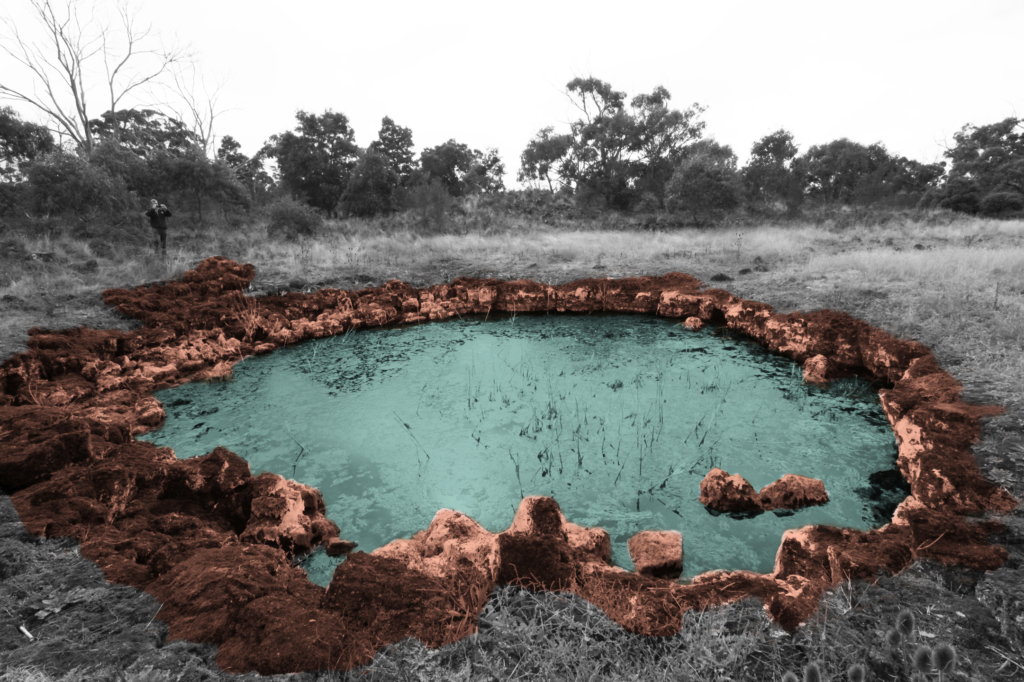
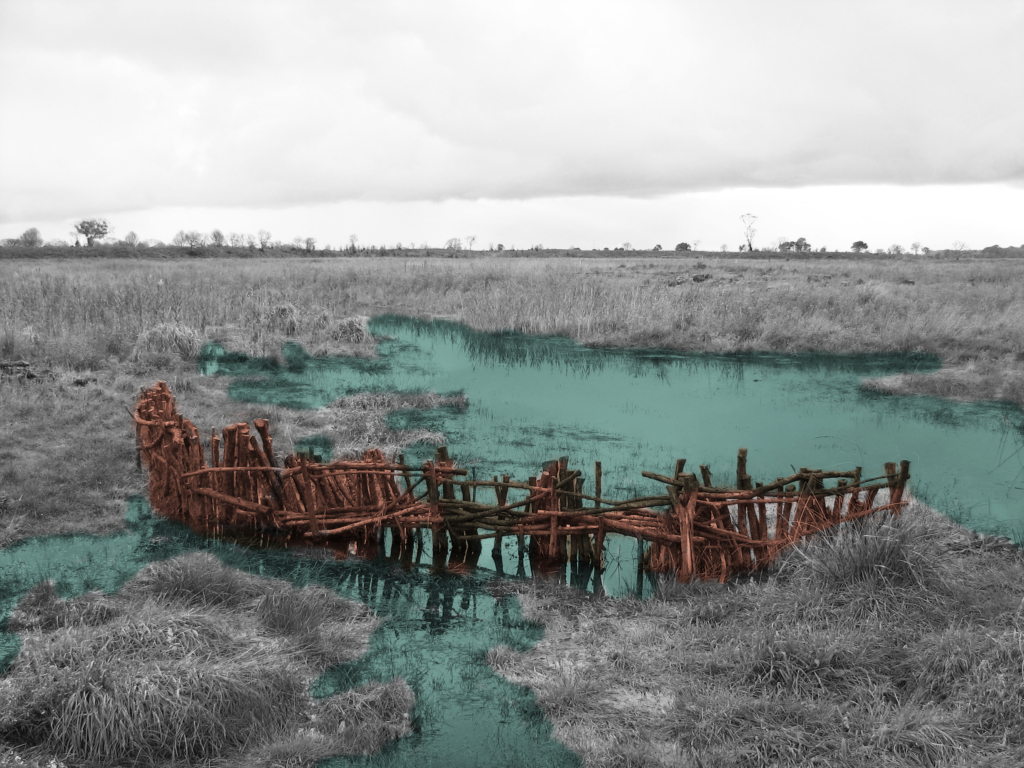
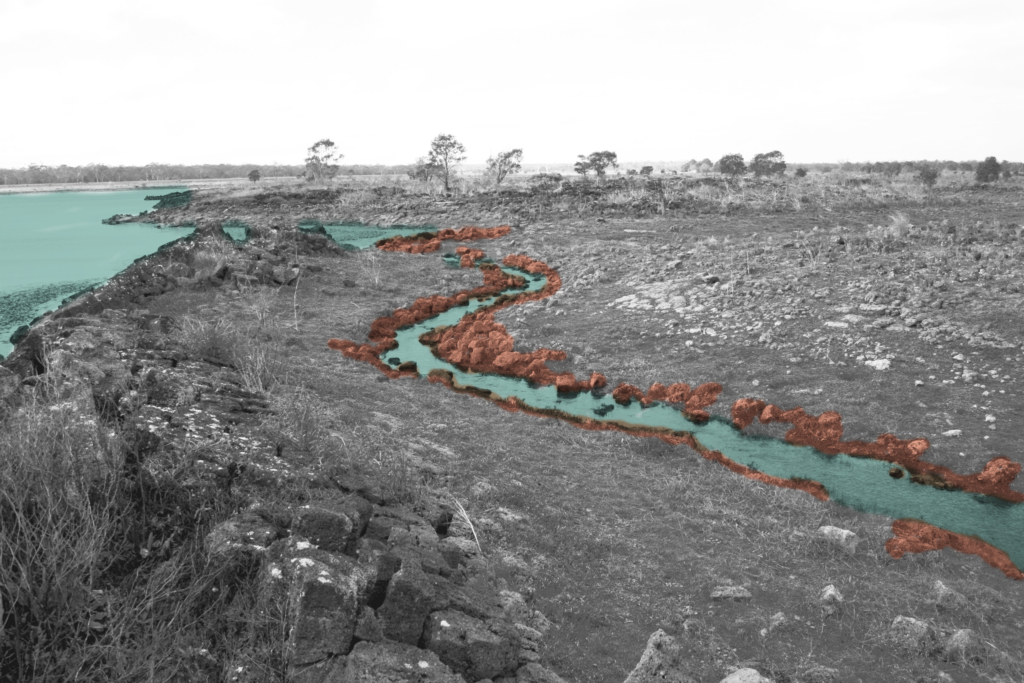
The most recognizable features are the constructions made with the placement of basalt rocks. This material was used for constraining the water in canals, shallow races or sinkholes. The rocks were piled up across waterways to form weirs and dams. Timber fences became traps in which woven baskets were placed to catch the eels.
Circular Stories
One of the most remarkable aspects of the Gunditjmara people is their extensive knowledge and understanding of their land. This knowledge was passed through generations through oral transmission for thousands of years, and allowed them to obtain an active and profound relationship with nature and the living beings that surround them.
The productivity of the system as well as the settlement of the communities was largely determined by the different seasons. Another factor that was key for the productivity of the system is the understanding of the eel’s life cycle and their migratory behaviour. The kooyang (short-finned eels), spend the majority of their life cycle in fresh waters but return to their spawning grounds along the Coral Sea. The eels have five stages in their life cycle, as adults, they migrate to the sea during summer and autumn for spawning, and return to the fresh water during winter and spring.
